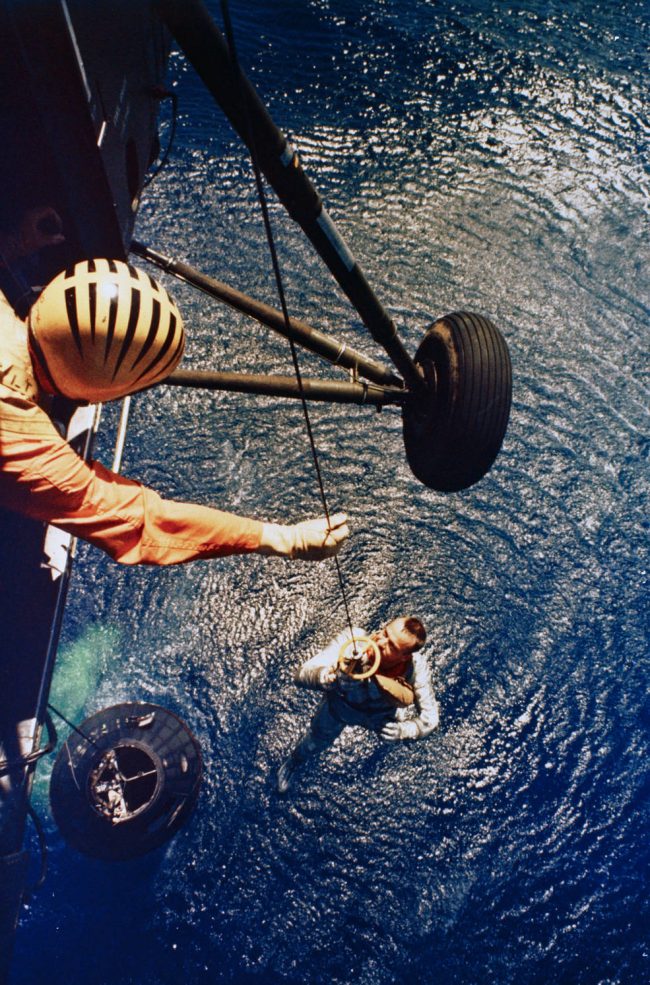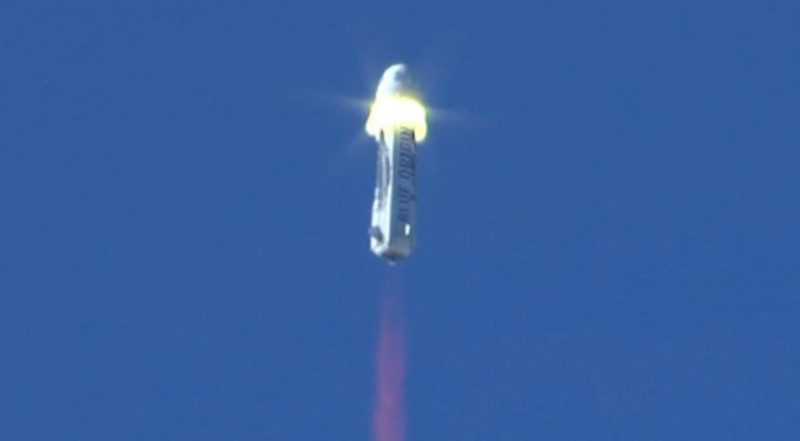Alan Shepard becomes 1st American in space
May 5, 1961. Just 23 days after Yuri Gagarin of the Soviet Union became the first person in space, NASA launched astronaut Alan Shepard aboard the Freedom 7 capsule powered by a Redstone booster to become the first American in space. His historic flight began from Cape Canaveral in Florida and, notably, lasted 15 minutes and 28 seconds before a splashdown in the Atlantic Ocean.
During the rocket’s acceleration, Shepard experienced 6.3 g (g-forces), or 6.3 times his normal weight, just before shutdown of the Redstone engine two minutes and 22 seconds after liftoff. Soon after, America’s first space traveler got sight of the Earth from above and became the first astronaut to say:
What a beautiful view.
Please help EarthSky keep going! Our annual crowd-funder is going on now. Your gift will support educational resources that teach people of all ages about space exploration and the fascinating facts about our universe.
Splashdown: Mission success!
His spacecraft splashed down in the Atlantic Ocean, 302 miles (486 kilometers) from Cape Canaveral. Subsequently, a helicopter recovered him and Freedom 7 and transported them to the waiting aircraft carrier USS Lake Champlain. After his flight, the astronaut joked:
It’s a very sobering feeling to be up in space and realize that one’s safety factor was determined by the lowest bidder on a government contract.

Project Mercury put the 1st American in space
Alan Shepard was one of 110 test flight pilots who volunteered for NASA’s manned space flight program – Project Mercury – in 1959. Later, NASA selected him and six other pilots to be part of the project. All of the pilots went through a rigorous training regimen before NASA made a final selection. Of these magnificent seven, America’s first astronauts, NASA chose Shepard to become the first American to travel into space.
Meanwhile, the first American to orbit Earth was John Glenn, aboard Friendship 7 on February 20, 1962.
Click here for an early NASA film showing the type of training undergone by the first astronauts

Competing against the Soviet Union during the Cold War
NASA launched Alan Shepard into space against a backdrop of the Cold War. The Soviet Union had launched Yuri Gagarin on April 12, 1961, aboard a spacecraft named Vostok (Russian for East). Gagarin completed a single orbit of the Earth, landing after a flight of one hour and 29 minutes. Consequently, he became a hero in the Soviet Union and around the world.
Then three weeks later, NASA astronaut Alan Shepard flew aboard a Mercury spacecraft, which he had named Freedom 7. Kurt Debus, who was NASA’s Launch Operations director at the time and who would go on to serve as the first director of the Kennedy Space Center, said years later:
We knew we were in a competitive situation. But, we never permitted the pressure to make us take risks that might endanger Shepard’s life or the success of the mission.
The Space Race heats up
Just weeks after Shepard’s flight, the Space Race began to heat up. Significantly, on May 25, 1961, President John F. Kennedy gave a stirring speech before a joint session of Congress, in which he declared his intention to focus U.S. efforts on landing humans on the moon within a decade. Among other things, he said:
I believe that this nation should commit itself to achieving the goal, before this decade is out, of landing a man on the moon and returning him safely to the Earth.
In due time, the first human footsteps on the moon took place on July 20, 1969. On that date, Apollo 11’s lunar module – named the Eagle – successfully landed on the moon.
Read more from NASA: Shepard’s Mercury flight was first step on the long journey to Mars
Read more: Are we on the edge of a new spaceflight revolution?

Bottom line: Alan Shepard’s historic first American manned flight into space aboard the Freedom 7 spacecraft took place on May 5, 1961.